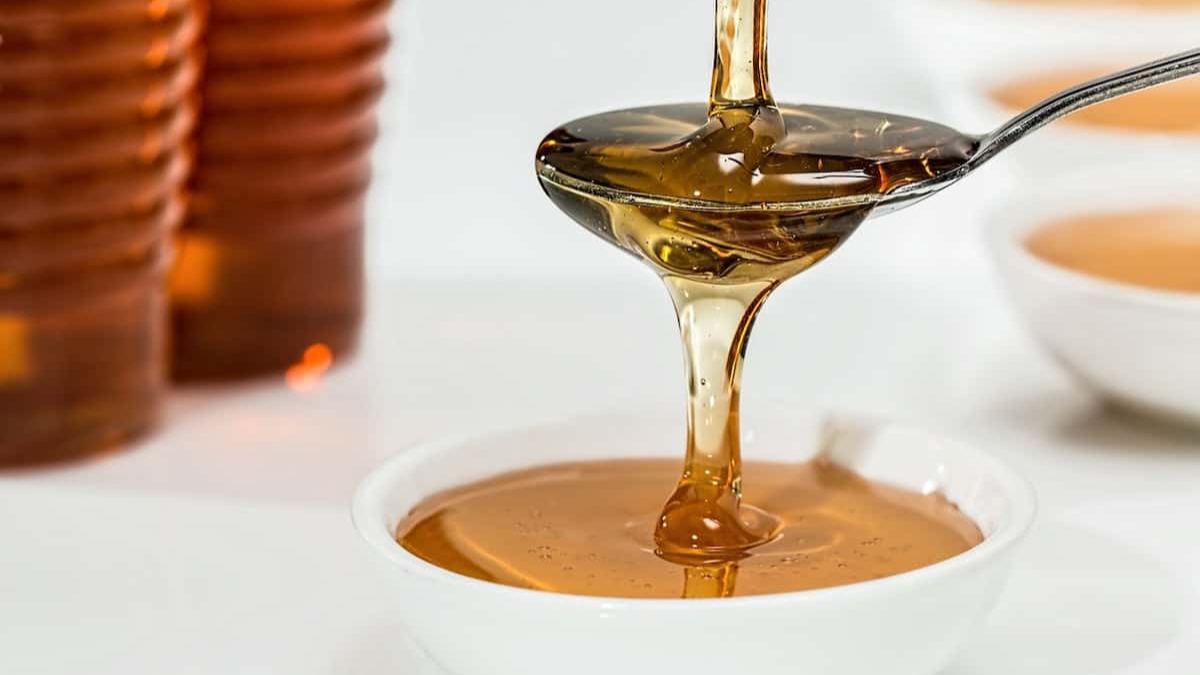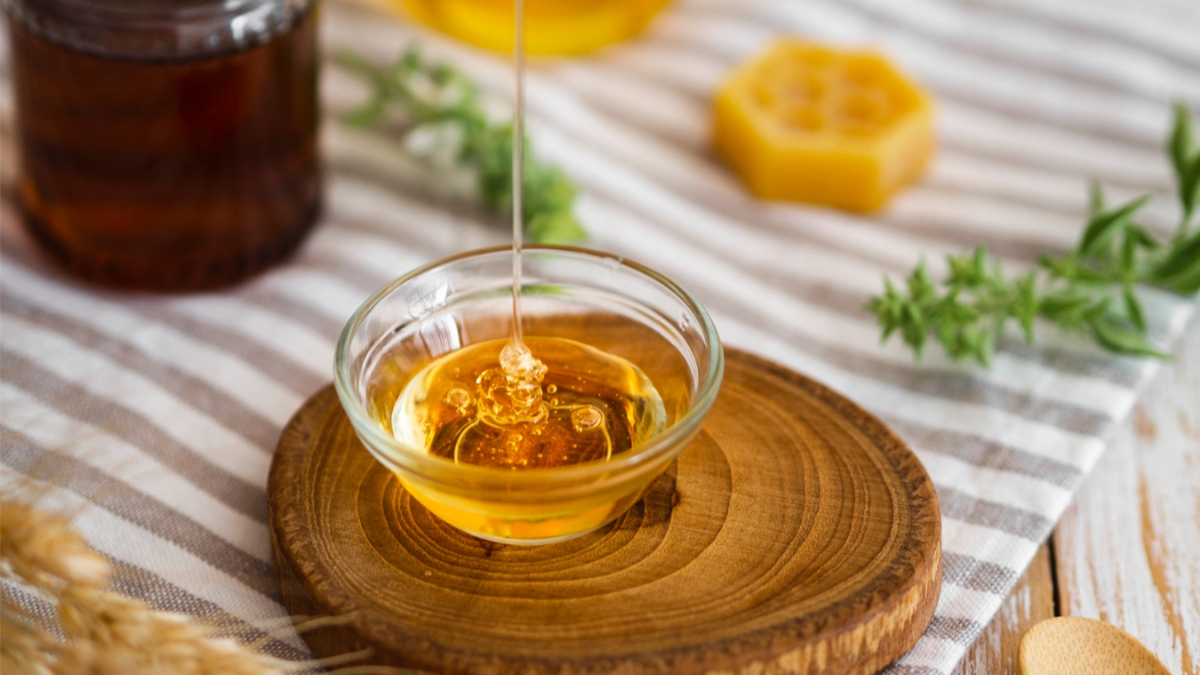A bottle of corn syrup you just bought is still sitting in your pantry after you used a small portion of it. Your favorite pancake syrup is gone, but you want to make pancakes. Fortunately, you remember that this corn syrup bottle is still in the cabinet and has only just begun to be opened.
The only unanswered question is, does corn syrup go bad? Contrary to other sweeteners, most people do not regularly ingest them. We buy it most commonly to make our homemade pancake syrup or as a cheaper alternative to maple syrup.
Even if you don’t use it frequently, knowing how to store it, how long it keeps, and how to recognize when it’s past its best may be beneficial. Additionally, we frequently use the syrup a few times, store it in the pantry cabinet, and then completely forget about it. This will enable you to determine whether the corn syrup still partially open is good the next time you run out of pancake syrup.
What is Corn Syrup?
A well-known food syrup derived from maize starch is called corn syrup. An enzyme is used in the processing to change the glucose in maize starch to fructose. It becomes sweeter via this procedure. Another method is to heat it while using diluted acid as a by-product of corn and corn starch (maize). Despite not always being manufactured from corn starch, glucose syrup is another name for corn syrup.
The market offers two varieties of corn syrup: light corn syrup and dark corn syrup. Other starchy plants, such as rice, wheat, or potatoes, are hydrolyzed to generate glucose syrup. The majority of our desserts are thickened and sweetened with them. It is also used to keep food items wet as a humectant.
While black corn syrup has been seasoned with molasses and caramel color, giving it a powerful, horribly sweet flavor, it has been decolored and has a moderate sweetness. Since it doesn’t crystallize when heated, light syrup is primarily employed in baking, but the dark syrup is most beneficial when a strong, sweet flavor is wanted. Additionally, it can be used as table syrup.
Uses of Corn Syrup
The commercial is used by bakers, confectioners, and large-scale producers to make baked products, condiments such as jams and jellies, and candies. By inhibiting the growth of sugar crystals, the syrup guarantees a smooth texture in sugar pies, pecan pies (or pecan tassies), chess pies, homemade ice creams, and sorbets.
Foods, including desserts, soft drinks, fruit juices, yogurt, bread, and cereals, all contain high-fructose corn syrup. Producers occasionally employ syrup as a humectant, which preserves food by retaining moisture and preventing drying out.
How to Tell if Corn Syrup is Bad?
Let’s start with a crucial fact: it’s OK for light corn syrup to turn yellowish over time. This doesn’t make it bad or ruin it. Because of its endless shelf life, it doesn’t go bad unless you want it to and fill the bottle with water and other contaminants.
It is quite improbable that the sweetener will spoil if the syrup is stored properly and the bottle is intact. If, however, after opening the bottle, you detect an odd fragrance or any floating particles of unknown origin, throw the bottle away. The same holds if you see a flaw in the syrup.
As I have stated in numerous writings, people are adept at identifying unhealthy food. Therefore, trust your spider senses if they start to tingle and throw away the sweetener. Give the syrup a taste to ensure it has sufficient flavor before using a significant amount if everything appears in order. If not, the corn syrup is over its sell-by date and needs to be thrown out.
How Long does Corn Syrup Last?
It typically has a “best by” date on the label, like most foods. This date tells you, at the very least, how long the product will maintain its finest quality.
When it comes to corn syrup, it practically always remains safe to consume. Please feel free to read the Karo Syrup FAQ if you need any form of confirmation of that. The creator claims that:
That means this sweetener will be safe to consume if any catastrophe doesn’t happen to it. Of course, the quality could deteriorate over time, but that’s all.
According to the company’s website, consuming Karo Syrup unlimitedly is safe. Therefore, the sweetener is safe unless something unfortunate happens and it spoils it.
But as I’ve already said, the flavor doesn’t last indefinitely. The best-by date on the label plays a role in this.
The date on the label is merely a general indication of how long sweets like corn syrup should remain in great condition. All provide some direction, but that’s about it.
Most of the time, maize syrup will continue to be used for months or even years after its expiration date. In other words, if it seems and smells alright, give it a taste before deciding whether or not to keep using it.
Last but not least, remember that the syrup’s shelf life is unaffected by initially opening the bottle. It doesn’t last forever unopened, but it lasts a few months after opening.
It will last for years if you store it properly, and you can utilize every last drop without wasting a drop.
How to Store Corn Syrup?
- Similar to how you would store maple syrup or other sweeteners, you should store corn syrup.
- This means keeping it at room temperature in the kitchen or perhaps a little lower in the pantry is good. The location should be dry, as is customary for storing any food.
- When not in use, make sure the bottle is securely closed after being opened. You may protect the syrup from pollutants and food particles by properly completing the bottle.
- In case you were wondering, corn syrup doesn’t require refrigeration after opening. Similar to honey, it can be enjoyed without being frozen.
- When it comes to storing, corn syrup doesn’t need much space. It suffices to have a location that is at room temperature and out of direct sunshine. That means that any pantry shelf or cabinet will work.
- The kitchen is OK if you use it frequently, as long as it doesn’t just sit on the counter and isn’t where the temperature changes. Either can ruin the flavor but won’t cause the sweetener to go bad.
- The suggestions above are still valid after you first open the bottle. Other than that, make sure you seal it after each usage.
What does Corn Syrup Taste Like?
Other than being sweet, corn syrup does not have a strong fragrance. Dark corn syrup smells more strongly of molasses and caramel. When you open a bottle of corn syrup, if you smell anything overly sweet, bitter, or alcoholic, that is a warning that the syrup has gone bad and needs to be discarded.
A pleasantly sweet flavor with hints of corn can be found in corn syrup. Dark corn syrup has a more overtly sweet, caramel-like flavor, whereas light corn syrup has a subtle, sweet flavor with overtones of vanilla.
The thick, smooth viscosity of corn syrup is unscented. Compared to sugar and honey, corn syrup is less sweet. Corn syrup frequently has no fragrance at all. Some claim that maize syrup has a faint vanilla and caramel aroma. Your syrup must be thrown away if it smells acidic, metallic, bitter, or alcoholic.
Dextrose, fructose, malt, and glucose can all be found in light and dark syrups. Their tastes diverge. Dark corn syrup has a richer and more robust flavor profile with deep caramel and chocolate notes and a deeper aroma, in contrast to a light syrup, which is thinner and has a mild, sweet flavor with only faint overtones of vanilla.
Corn Syrup Substitutes
Suppose you’re not planning to make specific types of candy. In that case, there are a few simple alternatives to a syrup that you can use instead: Many sweeteners do not contain enough long glucose chains to prevent the formation of sucrose molecules as well as syrup does. The majority of the following sugar alternatives can be used in a one-to-one ratio:
Agave syrup is made from the mature agave succulents’ sap, often known as agave nectar or agave syrup. It resembles light honey more in flavor and consistency than cane syrup.
Sugar cane juice is cooked down to create a thick syrup to make cane syrup. This cane sugar precursor resembles molasses, although it lacks sulfur and has a lighter, gentler flavor Sugar, water, and citric acid make up golden syrup, also referred to as light treacle. Like molasses, it has a thick, sticky consistency.
Corn syrup is a form of glucose syrup. Glucose syrups are manufactured from carbohydrates other than maize, such as whole grains, potatoes, or rice. The greatest option for glucose syrup in candy recipes is brown rice syrup, an illustration of well-liked glucose syrup.
Maple syrup: This sweetener isn’t only used to drizzle over pancakes. It adds richness and flavors like toffee, caramel, and pure vanilla. It can occasionally substitute syrup, especially in desserts like pies or ice cream.
Simple syrup: In some recipes, you can use sugar for syrup. Use brown sugar to simulate the flavor of dark syrup. To make simple syrup, granulated sugar, and boiling water should be combined in an equal ratio. After bringing it to a boil and stirring until the solids are dissolved, please turn off the heat and let it cool.
Is it Safe to Use Expired Corn Syrup?
When properly maintained and there are no indications that the syrup is wrong, it is thought to be safe to utilize expired it. Since syrup rarely spoils, most bottles will feature a best-by date rather than an expiration date. The syrup will still be safe to use after this date; however, this best-by date provides a range of the dates when it will be at its best. Years after purchase, the syrup is safe to use if properly preserved.
Although the food is resistant to bacterial development and deterioration, there is still a potential that it will perish if the bottle is left open or if it is not stored properly. As a general rule, it is OK to use it that has passed its best-by or expiration date, but if it is significantly older, look for any spoilage and throw it away if there is an unpleasant odor or smell. The danger is not worthwhile!
Conclusion
Many people are unaware that corn syrup, like the kind in the clear container found on grocery store shelves, is simply sugar extracted from corn and processed to create a liquid form. Although HFCS contains some glucose that has undergone a chemical conversion to fructose, pure glucose can still be found in commercial corn syrup.
As a result, it is much sweeter than corn syrup or regular table sugar. It can be found in both loaves of bread and sodas because it is reasonably priced. Despite not being sold on retail shelves, HFCS can be found in most sugar-sweetened drinks. You are neither satisfied nor filled up by it. Both are kinds of refined sugar and should only be used in moderation.


